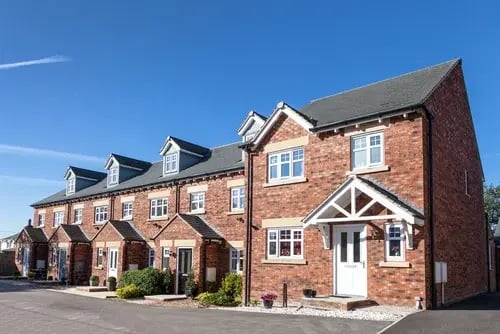Costs Involved
As well as the higher deposit required to secure the property, there are plenty of other costs that first-time landlords need to be aware of. These include:
- Fees - As with a residential mortgage the borrower will need to budget for broker and valuation fees, however these can be higher than the fees charged for a residential mortgage due to the more complex nature of the transaction.
- Tax – As of the 2021/22 tax year, landlords are required to pay tax on the profit from the property’s rental income. Further information on working out the tax can be found here. https://www.gov.uk/guidance/income-tax-when-you-rent-out-a-property-working-out-your-rental-income
- Early Repayment Charges (ERC) – If a landlord is planning to repay the mortgage before the end of the fixed term, then they should look for a mortgage with no early repayment charges.
- Stamp Duty – When someone purchases a property which they do not intend to live in (buy-to-let, holiday/second home), they will be required to pay stamp duty which carries an additional levy. For buy-to-let properties, there is a 3% charge on properties which are worth up to £125,000. This then increases as the value of the property increases. For the latest information on stamp duty please visit the government website - https://www.gov.uk/stamp-duty-land-tax/residential-property-rates
- Property furnished or unfurnished – having a furnished property may add monthly rental value, however, it will be the landlord’s responsibility to make sure furniture is fixed and replaced when needed.
Rules and Regulations
There are a number of rules and regulations that landlords must adhere to as the owner of a buy-to-let property. These include ensuring that a property is safe and fit for tenants to live in and protecting tenant deposits by placing them in government-backed scheme.
Check out our handy guide on the rules and regulations that landlords need to be aware of for more information – FAQ for Portfolio Landlords
Considering a location for buy-to-let property
Buy-to-let properties can be a great investment if done correctly and location of the property can be a big influence on whether it will be a solid investment for landlords.
Accessibility and convenience for tenants should be considered in the planning process, as they are the ones who will be inhabiting the properties.
Are there car parking spaces available, are there any nearby shops where the tenants can buy everyday essentials, and will the property be surrounded by other buy-to-let properties?
The rental demand within the area of the property is also important as this will determine how much a landlord can charge for rent.
Research on this is important and can be done using websites such as Rightmove or Zoopla, to determine the local rental demand and average costs within the area.
Accidental Landlords
There may come a time when someone inherits the title of being a landlord unintentionally. For example, a homeowner may find themselves struggling to sell an old property while they are trying to move into a new property. This may cause them to turn to renting out their old property while they search for a permanent purchaser.

If a homeowner for whatever reason does find themselves opting towards turning their property into a rental home, they must first contact their mortgage lender and make them aware of the situation.
A lender may grant a residential homeowner a ‘consent to let’ which allows them to rent out their property for a maximum of 12 months without having to make changes to the residential mortgage.
This is a short-term solution and is a good option for the homeowner if they believe that the state of the housing market would improve within a years’ time, enabling them to sell the house later.
A more long-term solution for an accidental landlord could be that they switch their residential mortgage into a buy-to-let. It should be noted that there may be changes that come with this switch such as a lower loan to value and the rate of the mortgage may also differ from the current rate.
Selecting a letting agent
Letting agencies may be a great solution for first time landlords as they take over the everyday management of a buy-to-let property, enabling the landlord to divert their time and energy elsewhere.
Letting agencies may differ from one another in terms of services and the landlord will need decide on the level of service they require from their letting agent based on their available time to manage the property, the accessibility to their property and how involved they want to be in dealing with the property and tenants. The level of service is usually directly associated to the charges involved.
Having a buy-to-let company structure
Having a buy-to-let property under a limited company may be more efficient for some landlords. Find out some of the benefits, below:
- No tax on rental income – If the property is privately registered under the name of the landlord, their rental income is taxed. This is because any rental income received is added to the landlord’s personal income. Properties registered under a limited company may receive rental income as business profits.
- Corporation Tax – Although there is no tax on rental income for properties registered under a limited company, they are still charged for Corporation Tax which currently stands at 19% (2021/22 tax year). Unlike Income Tax, Corporation Tax has no upper tiers.
- Deducting expenses through limited company – Private landlords are not allowed to deduct any finance costs, such as mortgage interest, from rental income.
However, buy-to-let properties owned by limited companies may do so as they are considered as business expenses. We recommend speaking with a qualified accountant as they may be able to provide details on any tax benefit or liability.
However, one thing that must be carefully considered when purchasing a buy-to-let property under a limited company is that landlords are not entitled to capital gains tax allowance. This means, when landlord plans to sell their property, it will be considered as a transaction by the company and not as a private individual.
Additionally, there are costs of running a limited company. This can include things from preparation of the accounts for the limited company (a legal requirement), corporation tax when profits made are taken from the business, and potentially any annual auditing.
While having a buy-to-let mortgage under a limited company could be more efficient for some landlords, their circumstances for what is more suitable must be considered.
Getting a buy-to-let mortgage as a first-time buyer
Buy-to-let mortgages can be tricky for first-time landlords to secure, especially if they do not already have an existing residential mortgage.

First-time landlords must ensure that they are able to meet all the requirements given by lenders before making an application. They should consider all the costs involved, regulations which could affect them, and affordability both initially, and in the long-term.
Lenders need to have confidence that a landlord will be able to repay the buy-to-let mortgage and will be able to cope with the day-to-day pressures of being a landlord.
We hope that this guide has given a thorough understanding of what should be expected if someone is interested becoming a landlord and using a buy-to-let mortgage.
For more useful information on being a landlord, please check out the landlord hub where there are plenty of other useful resources.



